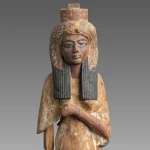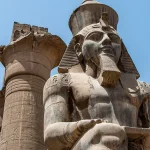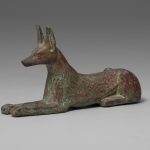Seated limestone statue of Keki
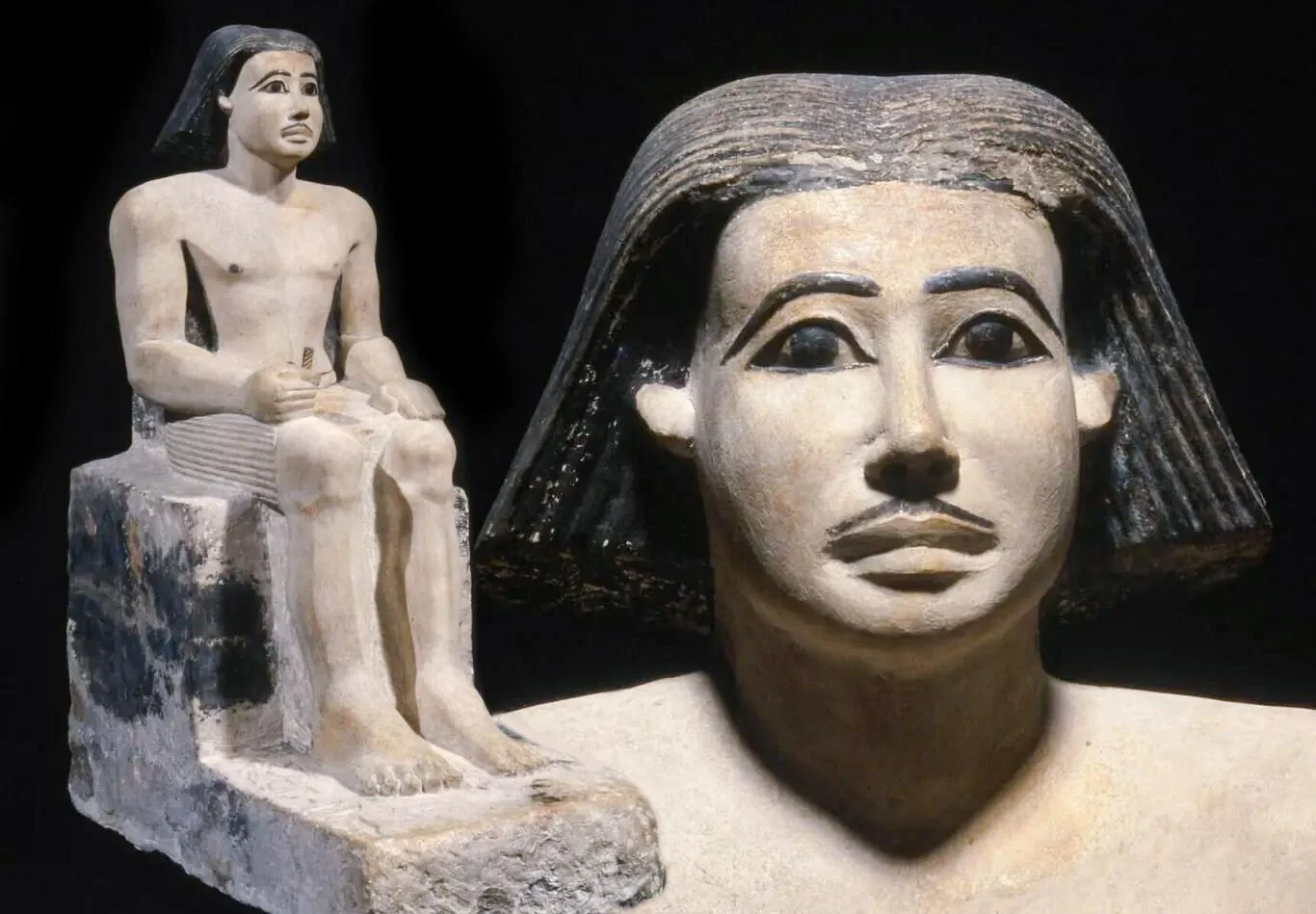
This limestone statue depicts a man named Keki, believed to have been a courtier during Egypt’s Old Kingdom. It stands as a remarkable example of the artistry and style of the period. The finely rendered pencil moustache, often seen on figures ranging from kings to courtiers, suggests it was a fashionable feature among the elite who could commission statues of such refinement.
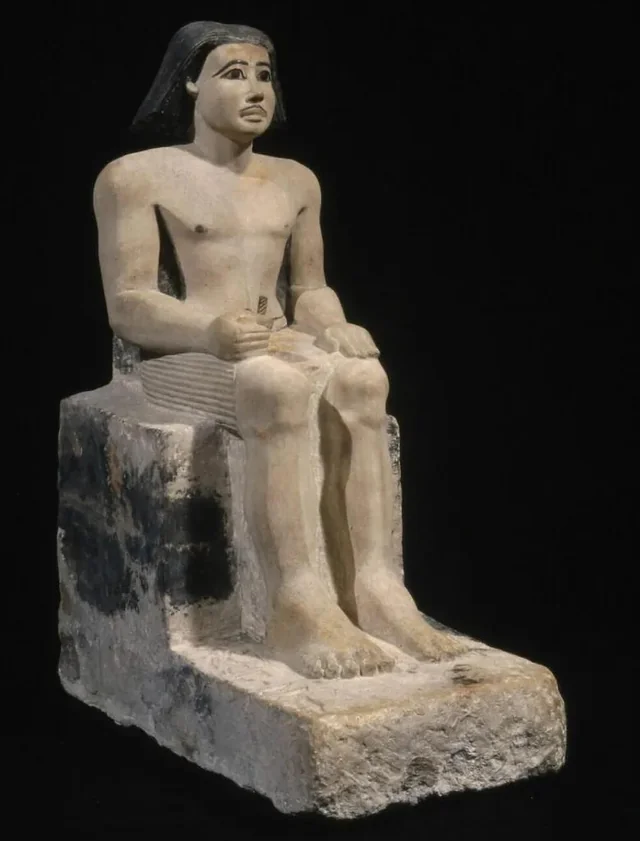
Keki is shown with thick black eyebrows, extended with kohl that also outlines his eyes—a characteristic element of Egyptian style that endured throughout the Dynastic era. He wears a wig, centrally parted and cut to just above shoulder length.
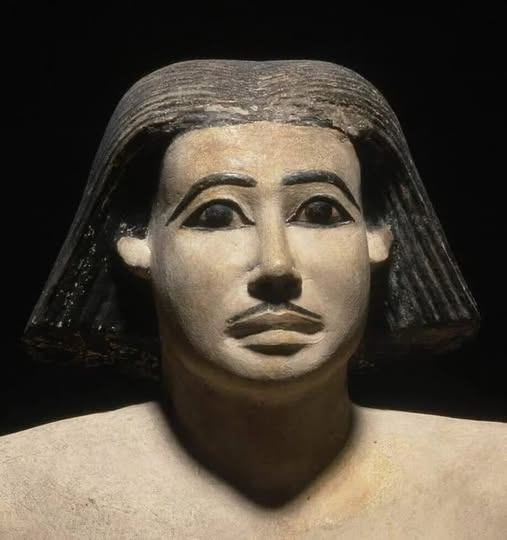
His proportions are heavy, with large limbs, feet, and toes, a stylistic choice typical of seated statues of the time. Traces of pigment suggest his skin was painted a pale tone, with hints of yellow and red still visible.
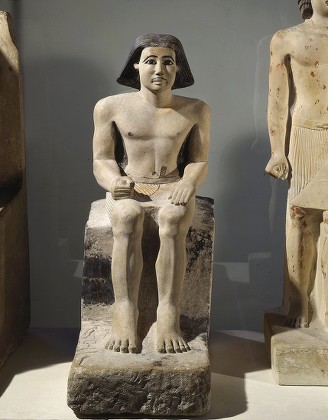
One hand rests on his lap, while the other grasps a clenched fist, possibly once holding a seal or another object now lost. Bare-chested with painted brown nipples, he is dressed in a pleated white linen shendyt (kilt).
Seated limestone statue of Keki
Old Kingdom, 6th Dynasty, c. 2500–2350 B.C.
Department of Egyptian Antiquities, Louvre Museum (A 41)


